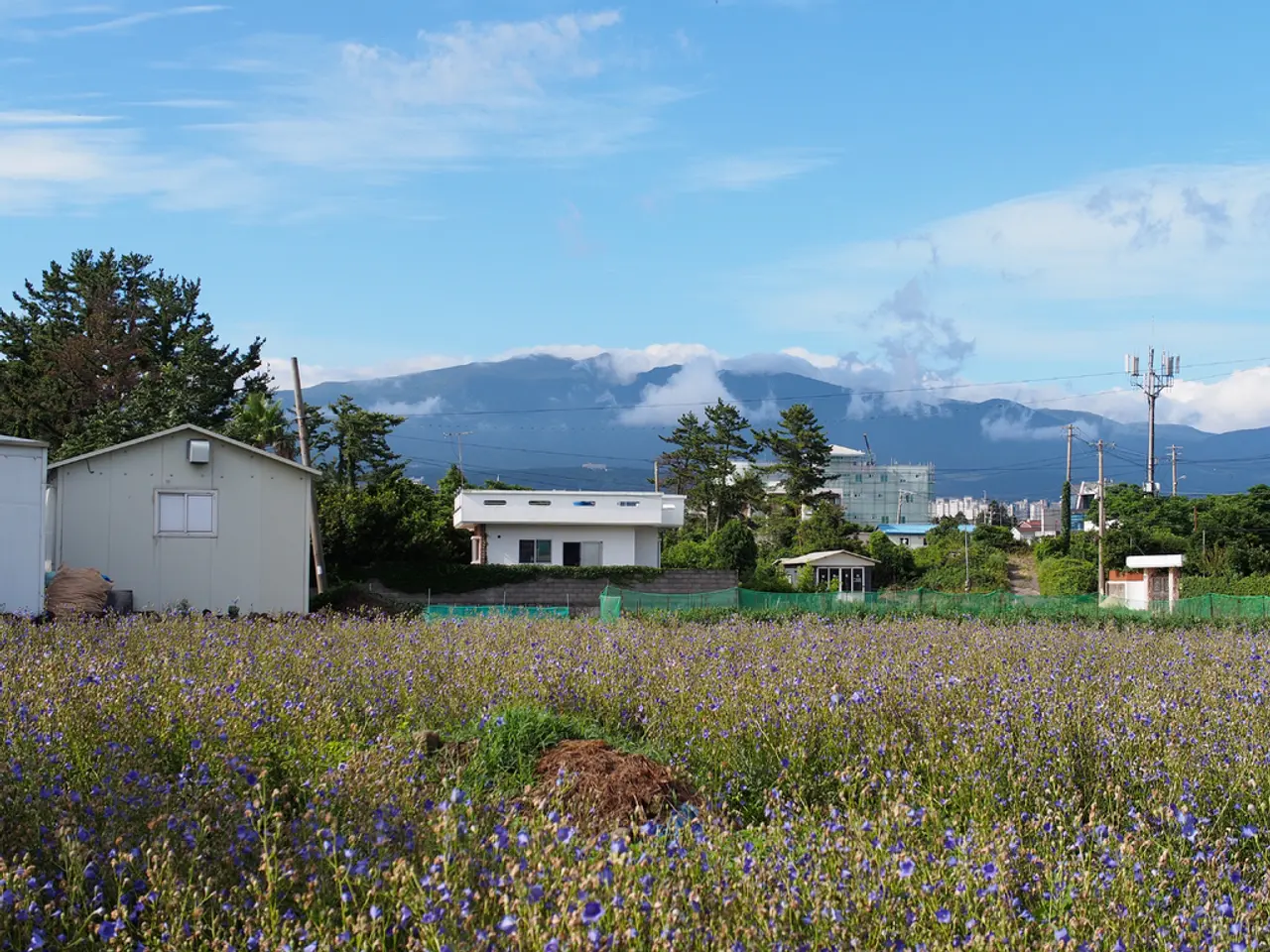Solar Installation Yielding Maximum Output in Winter's Bite
In Switzerland, the shift towards renewable energy is gaining momentum, particularly in the Alps. One of the most notable examples is the AlpinSolar power plant, located at 2,500 meters on the Muttsee dam in the canton of Glarus, an hour's drive from Zurich.
AlpinSolar, Switzerland's largest solar power plant in the Alps, consists of a kilometer-long row of 5,000 panels and generates 2.2 megawatts of power, enough to power 700 homes. The energy produced by AlpinSolar over the next 20 years has already been sold to the supermarket chain Denner.
The Swiss government aims to have enough photovoltaics to cover the summer deficit caused by the abandonment of nuclear power by 2034. To achieve this, Switzerland's main utility, Axpo, plans to generate 1.2 gigawatts of new solar power by 2030. The AlpinSolar power plant demonstrates Axpo's commitment to this goal.
The AlpinSolar power plant is uniquely designed to accommodate skiers in winter and hikers in summer, with the panels arranged in a way that minimises disruption to these activities. This innovative approach is showcased in another Axpo project, Ovra Solar Campluns, which will be the first project under Axpo's "SolarOffensive" program. Located at 2,000 meters in Graubünden, Ovra Solar Campluns will feature 36,000 panels and cover an area equivalent to 26 football fields.
The Muttsee dam, where AlpinSolar is located, is particularly suitable for alpine photovoltaics due to its southwest orientation and lack of higher mountains. This southwest orientation ensures maximum sunlight exposure, making it an ideal location for solar power generation.
AlpinSolar has already been operational during the 2022/23 winter and demonstrated the value of alpine photovoltaics. The plant produced 3.3 million kilowatt-hours per year, a significant contribution to Switzerland's renewable energy goals.
Beyond AlpinSolar, at least one notable new high-altitude plant, NalpSolar, is under construction. This alpine solar plant, located near the Lai da Nalps reservoir above Serdun in Graubünden, is being developed by Axpo and STRABAG at over 2,000 meters altitude. NalpSolar is specifically designed to generate significant electricity during the winter months, taking advantage of high-altitude solar irradiance. Construction is planned to complete by 2028, and the power generated will be allocated to the SBB grid for at least 20 years.
This strategic push for more alpine solar projects in Switzerland is a response to the upcoming phase-out of nuclear power, particularly after the closure of the oldest plant, Beznau, expected by 2031. Despite these efforts, there will still be a significant winter deficit of around 50 terawatt-hours in Switzerland. However, projects like AlpinSolar and NalpSolar are considered milestones in the Swiss energy transition, demonstrating the potential of high-altitude solar power to address seasonal energy needs.
Sources: [1] Swissinfo.ch. (2023). Switzerland's Alpine Solar Power Push: AlpinSolar and NalpSolar Lead the Way. Retrieved from https://www.swissinfo.ch/eng/switzerland-s-alpine-solar-power-push-alpin solar-and-nalpsolar-lead-the-way/47031682
- The science of environmental-science and finance intersect in Switzerland's renewable energy industry, as exemplified by the success of solar power plants like AlpinSolar and the forthcoming NalpSolar.
- The AlpinSolar power plant, located in the Swiss Alps, is a significant contribution to the climate-change fight, proving that energy production can coexist with outdoor activities like skiing and hiking.
- The technology behind high-altitude solar power plants, such as AlpinSolar and NalpSolar, is advancing rapidly, offering a promising solution to seasonal energy needs in the industry.
- The environmental-science community and investors alike recognize the financial benefits of solar power plants like AlpinSolar and NalpSolar, as they strategically address the winter deficit caused by the phase-out of nuclear power in Switzerland.




